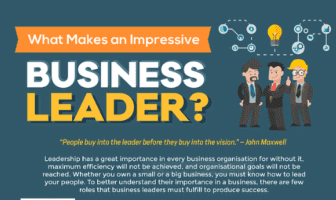
Competing with the big guys is something many small business owners find intimidating. It can be difficult to find ways to stand out when larger corporations have more resources and brand recognition. Many small business owners desire growth but may find their existing resources are insufficient for capturing more market share.
A small company’s umbrella of resources often includes more than its cash flow, contingency fund, and other physical assets. Within that umbrella are tools and processes a business relies on to help shape organizational culture. What works for a small business in its beginning stages can easily become obstacles to progress later, though.
As a business takes hold in a community, embracing enterprise-like tools and processes can support growth and efficiency. Here are three areas where small business owners can take advantage of enterprise-level approaches.
1. Streamlined Payroll
Keeping track of hours and wages for one or two employees doesn’t seem overwhelming. Even a slightly larger handful of three or four staff members may seem manageable. Yet trying to run payroll regularly without an automated solution can take you away from other critical responsibilities.
Avoidable mistakes can start to pop up, and you could lose track of important changes to payroll tax regulations. Payroll software takes care of many of the time-consuming tasks associated with getting your employees their checks.
For example, Gusto, a payroll solution for small businesses, can record and manage your employees’ pay rates and hours. You’ll see how many hours each worker put in for the pay period so you can verify them. Each employee’s pay rate is kept within the app, allowing you to make adjustments when raises go into effect. Within these platforms, you can also track vacation time, holiday pay, and sick leave.
Each pay period, payroll software takes care of sending out paper checks or direct deposits to employees. This alone can save you hours of work, as payroll taxes and other deductions are automatically calculated. The software keeps up to date with changes in payroll tax laws and any adjustments in deduction percentages. Filing forms and taxes with federal agencies are also automated through the app.
Although you’ll maintain control over your payroll process, you can rely on automation to scale to your evolving business needs. Complete solutions allow you to add features like self-service for employees’ benefits and onboarding paperwork. If you hire independent contractors, these apps help you manage paperwork and payments for this separate workforce. Your payroll process’s efficiency will increase, and you’ll catch errors before they happen.
2. Referral and Loyalty Programs
Most, if not all, large corporations offer customers the chance to sign up for loyalty programs and earn rewards. Some enterprise-level businesses also offer clients perks and discounts for referring others to the company. Loyalty programs help businesses retain existing customers, which is less expensive and more profitable than going after new ones.
Gaining new customers will cost you five to 25 times more than keeping your current ones happy. Research also shows when you increase your retention rates by 5%, you can boost your profits by 25% to 95%. Satisfied and loyal customers not only keep returning to your business, but they become a source of word-of-mouth advertising. They promote your company through online reviews, testimonials, and offline conversations with friends and family.
Rewarding your customers for their loyalty and referrals reminds them of why they chose you in the first place. Maybe your coffee shop makes their favorite beverage in a unique way that appeals to their taste buds. Your customer service might be a cut above the rest, or you’ve got a product with superior quality and longevity. Your company could be invested in the community or contribute to social causes consumers associate with their identities.
Loyalty programs capitalize on these types of drivers, providing a personalized experience that encourages repeat purchase behaviors. Many programs take advantage of tech to deliver and track rewards. Examples include apps, web-based portals, and personalized emails with offers and access to exclusive sales events. However, other loyalty programs rely on more simplistic methods like punch cards.
The rise of premium loyalty programs is another avenue to consider as your business grows. Premium loyalty programs involve an ongoing subscription fee for access to a higher level of discounts and benefits. For example, Amazon Prime and Walmart+ offer perks like free shipping and delivery, access to deep discount sales events, and bonus video content.
These loyalty programs give customers a sense of exclusivity and a range of benefits they value. They’re increasing in popularity among all generations but especially among Millennials and Generation Z. In fact, 77% of Gen Z will pay for premium loyalty programs if the perks are valuable.
3. Digital Marketing
In the past, online marketing meant publishing a web page and creating a few banner ads. As more consumers adopted the internet and email use, digital marketing evolved to include full-blown e-commerce sites and promo emails. Today, digital marketing relies on Google My Business strategies, SEO, online content, social media, PPC ads, and big data.
Online events, gated content like white papers and downloadable e-books, and knowledge sharing via webinars are common lead-generation tactics. Customers expect to find value in online information when searching for solutions to their problems. They may not buy something from you immediately, but your digital presence can put you on their radar.
Social media is another way to encourage word-of-mouth advertising and generate excitement about your brand. Social media platforms help you tell your brand’s story, initiate conversations about customers’ experiences, and display a responsive approach to concerns.
In addition, you can gauge what others are saying about your competitors through tactics like social listening. Integrating web traffic analytics and apps that track the effects of your digital content can help you measure its effectiveness. You can then respond by mixing up your content and the platforms you share it on. Your business can also ramp up strategies tied to things like local SEO.
In a crowded marketplace, it can be challenging for small businesses to gain ground. Achieving success and sustainability sometimes means you need to adopt new processes and tools that support a long-term growth strategy. By transitioning to some of the mechanisms big business relies on, you’ll increase your operational efficiency and market impact.
Read Also:






























